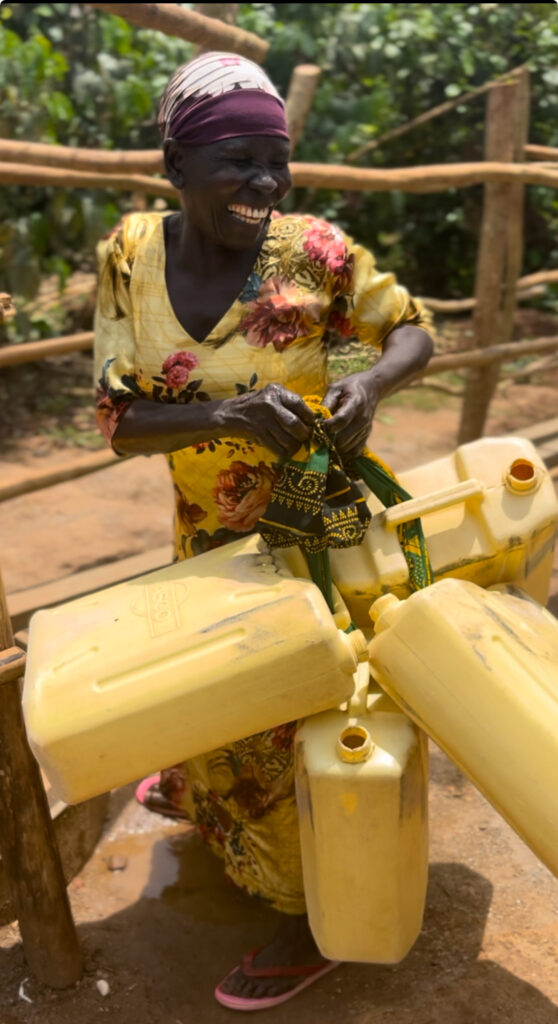This woman is very excited to collect clean water from her new well.
This year’s trip marks my first time visiting the beautiful country of Uganda.
I have to say Uganda has really exceeded my expectations in so many ways! Of course, The lush, mountainous landscape truly took my breath away, but my favorite part was definitely the people. The quick-witted, kind, outspoken, and lively people of Uganda have truly stolen my heart.
On most occasions, we were greeted with big smiles, laughter, singing, and of course, dancing. The children were gracious, well behaved, and, like all children, extremely curious and full of life!
We visited well repair projects, future borehole projects for schools, communities in desperate need of water, as well as communities experiencing clean water access for the first time in their lives!
My favorite moment was when we were able to see the first flow of water from a well in a village with many children. The children kept saying,
“The water is so clean, it’s so clean!”
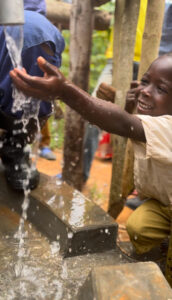
Their spirits were lifted, and joy surely filled the air quickly as clean water gushed from the newly completed well.
This young girl is seeing clean water for the first time in her life!
But that’s not all, as a lot of firsts happened for me in Uganda. I was excited to see the power behind united communities and witness the sweat-equity process unfold right before my very eyes. A huge part of our projects being sustainable is the community’s ability to unite. Forming a water committee is crucial, of course, but so are the smaller, less talked about processes. Such as the community coming together to help build the fencing, carrying much-needed supplies, clearing the surrounding area, and of course, cooperation. This is critical in keeping well costs low but also unites the people and empowers them!
As the community invests their time and sweat into the production of the new well, the well quickly becomes part of them and is something they are very proud of.
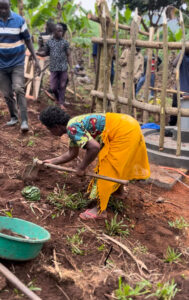
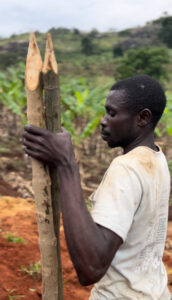
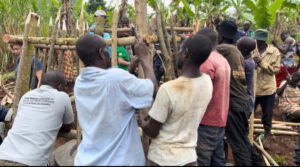
An older woman is clearing up the surrounding area as the men add the finishing touches to the protective fencing. This well completed within a few hours of these photos. This is a relief since the current water source here was a very small stagnant pond.
I was eager to witness some of the ‘before the well’ situations in Uganda as I wasn’t able to document this last year.
We visited a few villages where clean water is clearly needed. One in particular that stood out to me was Kakooge, located in the heart of the Kayunga district. Within this village lives a young girl named Medina. This sweet, gentle girl followed us around, brought her younger siblings to meet us, and kept curiously touching our hands and looking deep into our eyes. She was adorable and very intrigued by us! Later, Medina’s mother, Mariam, and several of the local women from the community took us to see their current water collection process.
No matter how many times you witness this, it always crushes your heart.
To witness human beings drinking filthy water, to see them suffering without life’s most basic need, is difficult to put into words. The local women showed us how they typically collect water from the lake, which they also bathe and defecate in.
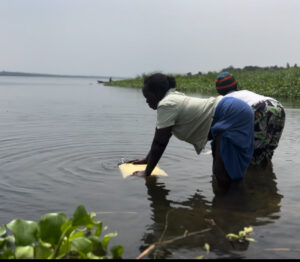
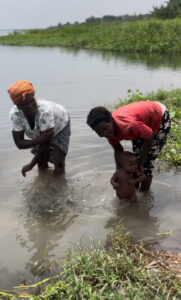
This is why Water to Thrive’s process of implementing WASH training is so critical.
It’s about educating the community to make simple, life-saving changes—changes they weren’t aware of prior to this training.
Medina’s mother spoke shortly after our arrival to the water source. She explained how Medina had been especially affected by the bacteria in the lake water.
“She is often in the local clinic being treated for waterborne illnesses. Her stomach doesn’t handle the bacteria in the water very well, and out of everyone in the community, Medina is clearly suffering the most.”
-Mariam
This was very hard to hear, and my heart ached for Medina and her very concerned mother. I know they will soon have clean water here, but I pray it will be soon enough.
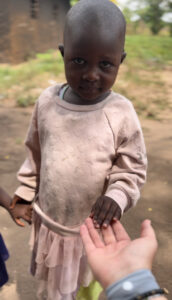
Medina being very sweet and curious.
While in Uganda, we also had the opportunity to visit many schools, some with newly completed water projects and some without clean water.
The difference is undeniable. With clean water access, hand washing stations can be established, and sanitation and hygiene practices quickly improve. As you can imagine, this is critical to reducing the spread of illness amongst schoolchildren, both at school and within their households.
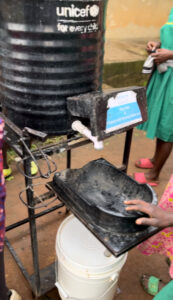
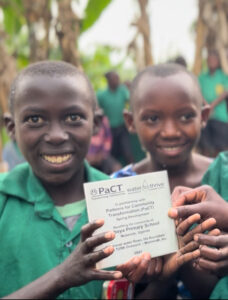
As for the schools without clean water access, the teachers reported a large absence rate due to sick children. One school, in particular, reported a high number of illnesses and skin infections due to the fact that the children were collecting water from an unsanitary marsh, where they stood barefoot while collecting dirty water. The teachers here also explained how the children’s ability to focus and study was limited due to frequent stomach pain caused by drinking the contaminated water. These issues have greatly reduced their ability to excel academically and lead prosperous futures.
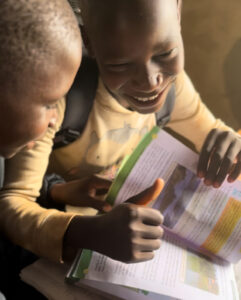
Clearly, clean water is directly related to the success of future generations, flourishing communities, increased health, education, and improved quality of life.
This is why Water to Thrive works tirelessly with its partners to ensure the success and longevity of their water projects.
Meeting our partners in Uganda, The Uganda Water Project (UWP) and PaCT was an inspiring experience in itself.
The UWP team diligently focused on the ‘buy-in’ from the local communities. They passionately briefed the people about the importance of the maintenance fund and in properly caring for the well. It is extremely important for the community to fully understand the importance of this fund and for its members to give willingly. This fund is critical to the well’s longevity. The UWP made a huge effort to show us sites with strong stories. As the days get long and time is limited, it is critical for our communication and outreach efforts to visit the locations with the most impact.
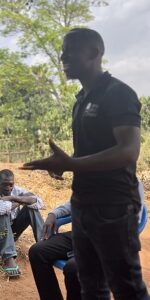
Kahto, UWP WASH Coordinator briefing a local community.
When UWP was asked how Water to Thrive is different from its other partners they said,
“Water to Thrive prioritizes servicing communities with the greatest need. This poses many challenges, but we appreciate that despite the challenges faced, Water to Thrive truly cares about helping the people who need clean water the most.”
-Kahto
As for PaCT, I could write an entire book about the perseverance, passion, and impact this organization has had on the local communities.
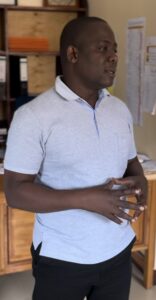
Geoffrey, PaCT Executive Director explains the history of the organization and its impact on the local communities.
PaCT is truly raising the bar on community transformation. This small yet powerful organization facilitates a multitude of life-changing programs. to include but not limited to primary and secondary education sponsorships for orphans, increased education on female reproductive health, facilitating the production of reusable menstrual pads, empowers women with technical skills training, and even a local organic coffee farm, which aids in its organization’s operational funding. This local farm also increases the economy of the surrounding areas by providing jobs to the local communities. The Executive Director, Geoffrey has gone above and beyond to ensure sustainability and impact within the regions they serve.
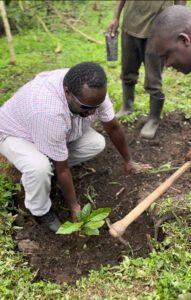
Water to Thrive’s Hydrologist, Gashaw, planting a coffee plant on behalf of Water to Thrive and PaCT’s partnership.
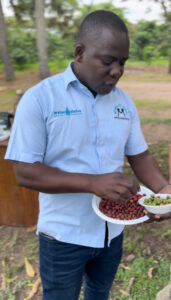
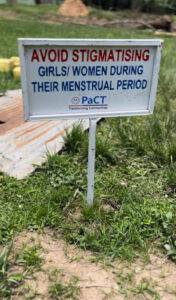
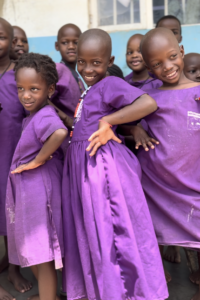
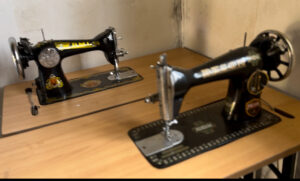
Geoffrey provided a detailed tour of the organic coffee farm and the important role it plays in building the economy of the local people and supporting the operations of PaCT and the on-grounds boarding school, Nabukenya Primary School. Nabukenya prides itself on the level of education they provide related to normalizing female menstrual cycle awareness.
This is vital to the education of young girls as many girls often miss school during menstrual cycles to avoid embarrassment due to lack of menstrual pads. The school teaches children how to make reusable pads and even has on site sewing machines for them to use.
With the assistance of Geoffrey and his team, we were able to capture the most relevant stories of transformation. It was with PACT that we first witnessed the community sweat equity processes and the first flow of water to young children in a small rural village.
When PACT is around, the people are very excited and eager to express their gratitude! They know this small but mighty organization is going to go the extra mile for them and change their lives.
Something I continue to learn on my travels to the communities we serve in East Africa is how amazing our partners are. When I hear the Water to Thrive founder, Dick Moeller explaining how blessed this journey has been, I think of our donors and supporters, but most of all, I think about how incredibly blessed we truly are to have found such amazing partners. Partners who not only care about the quality of the work but truly care about the people they serve.
Thanks to Water to Thrive, I continue to meet incredible people on my philanthropic journey, and I am so grateful to be able to witness firsthand just how many good people there are, doing everything they can to produce great work that is changing so many lives for the better!
The days are long and grueling at times, but I am so honored to have the opportunity to share these incredible stories of transformation from one world to another, bridging the gap that divides us and proving the magnitude at which impact is generated when empathy takes action!
Jamie Morris
Marketing Director
Water to Thrive
